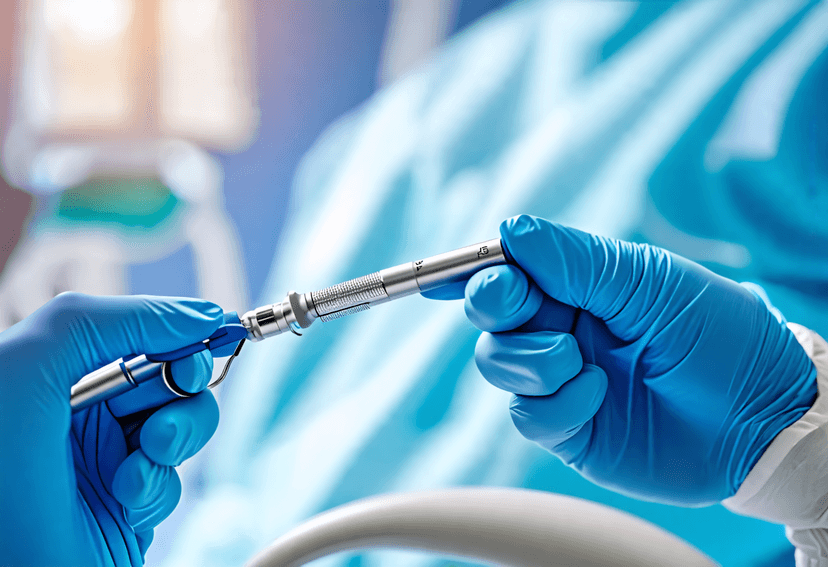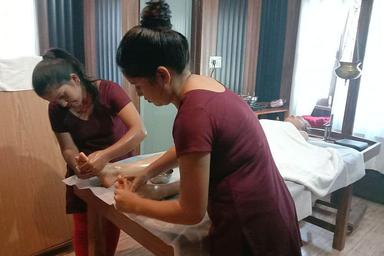
Guardians of Women's Health: The Pap Smear Screening
09 Sep, 2023
 Healthtrip
Healthtrip1. Understanding the Pap Smear Test
The Pap smear, also known as the Pap test or cervical cytology, is a screening procedure used to detect abnormal changes in the cells of the cervix, the lower part of the uterus that connects to the vagina. The primary purpose of this test is to identify early signs of cervical cancer or precancerous conditions, allowing for prompt intervention and treatment.
2. The Importance of Pap Smear
2.1 Detects Precancerous Changes
The Pap smear can identify abnormal cell changes in the cervix that may develop into cancer if left untreated. Treating these precancerous conditions early can prevent the onset of cervical cancer.
Most popular procedures in India
2.2 Highly Effective
The Pap smear is a highly effective and proven method for cervical cancer screening, reducing mortality rates significantly.
2.3 Asymptomatic Detection
Cervical cancer often develops without any noticeable symptoms in its early stages. The Pap smear can detect abnormalities even when you feel perfectly healthy.
Wellness Treatments
Give yourself the time to relax
Lowest Prices Guaranteed!

Lowest Prices Guaranteed!
3. Who Should Get a Pap Smear
Pap smears are typically recommended for women between the ages of 21 and 65, although the exact guidelines may vary depending on individual factors and medical history. Here's a general guideline:
3.1 Start at Age 21
Women should begin getting regular Pap smears at the age of 21, regardless of sexual activity.
3.2 Frequency of Testing
The frequency of Pap smears may vary based on age and risk factors. Younger women may require annual testing, while older women with a history of normal results may need them less frequently.
3.3 Discuss with Your Doctor
Always consult with your healthcare provider to determine the appropriate screening schedule for your specific situation.
4. The Pap Smear Procedure
The Pap smear is a relatively simple and quick procedure:
4.1 Preparation
Before the test, it's recommended to avoid sexual intercourse, douching, and using vaginal creams for at least two days. Your healthcare provider will provide specific instructions.
4.2 The Test
During the exam, you will lie on an examination table, and a speculum will be inserted into your vagina to allow the doctor to access the cervix. Using a small brush or spatula, the healthcare provider will gently collect cells from the cervix's surface.
4.3 Laboratory Analysis
The collected cells are then sent to a laboratory for analysis. A pathologist will examine the cells under a microscope to look for any abnormalities.
5. Interpreting Pap Smear Results
Pap smear results are typically categorized into several groups, including:
5.1 Normal
No abnormal cells are found.
5.2 ASCUS (Atypical Squamous Cells of Undetermined Significance)
Mild cell changes that may be due to infection or other factors.
5.3 LSIL (Low-Grade Squamous Intraepithelial Lesion)
Slightly more significant cell changes that may require follow-up.
5.4 HSIL (High-Grade Squamous Intraepithelial Lesion)
Significant cell changes that may indicate precancerous conditions.
6. Benefits and Limitations of the Pap Smear
6.1 Benefits
The Pap smear has several advantages, including:
- Early Detection: It can detect cervical cancer and precancerous conditions at an early stage when treatment is most effective.
- Preventive: Identifying and treating precancerous changes can prevent the development of cervical cancer.
- Minimal Discomfort: The procedure is relatively quick and causes minimal discomfort for most women.
- Proven Effectiveness: The Pap smear has a long history of success in reducing cervical cancer mortality.
6.2 Limitations
While the Pap smear is a valuable screening tool, it does have some limitations:
- False Positives: It can yield false positive results, leading to unnecessary anxiety and follow-up tests.
- False Negatives: In some cases, the Pap smear may miss abnormal cells, providing a false sense of security.
- Frequency: The recommended frequency of testing can vary, making it essential to follow your healthcare provider's guidance.
7. Future Trends in Cervical Cancer Screening
Advancements in healthcare are continually improving cervical cancer screening. Some emerging trends include:
- HPV Testing: Human papillomavirus (HPV) testing is becoming more common alongside Pap smears to enhance screening accuracy.
- Vaccination: Widespread HPV vaccination can reduce the risk of cervical cancer in future generations.
- Liquid-Based Cytology: This newer technique may improve the accuracy of Pap smears.
- Telemedicine: Remote monitoring and telemedicine options may make screenings more accessible.
8. Taking Control of Your Health
Regular Pap smears are a critical component of women's healthcare, providing early detection and prevention of cervical cancer. By following your healthcare provider's recommendations and staying informed about emerging screening methods, you can take control of your health and reduce the risk of cervical cancer.
9. Resources and Support
If you have questions or concerns about Pap smears, cervical health, or cervical cancer, don't hesitate to reach out to your healthcare provider. They can provide guidance, support, and information to help you make informed decisions about your health. In conclusion, the Pap smear test remains a cornerstone of women's health, offering the opportunity for early detection and prevention of cervical cancer. Understanding the importance of this screening, along with its benefits and limitations, empowers women to take charge of their well-being. Regular check-ups and open communication with healthcare providers are essential steps on the path to maintaining optimal cervical health and overall wellness.
In conclusion, the Pap smear test remains a cornerstone of women's health, offering the opportunity for early detection and prevention of cervical cancer. Understanding the importance of this screening, along with its benefits and limitations, empowers women to take charge of their well-being. Regular check-ups and open communication with healthcare providers are essential steps on the path to maintaining optimal cervical health and overall wellness.
Related Blogs

Birthright: Empowering Women's Health and Wellness
Discover comprehensive healthcare services for women at Birthright, a renowned

Laparoscopic Hysteroscopy: A Minimally Invasive Diagnostic Tool
Explore the benefits of laparoscopic hysteroscopy, a minimally invasive diagnostic

Laparoscopic Hysterectomy: A New Era in Women's Health
Explore the benefits of laparoscopic hysterectomy, a minimally invasive surgical

Embracing Wholeness: A Journey to Women's Holistic Health
Discover the power of holistic health for women

Women's Health and Wellness Trends
The latest trends in women's holistic health and wellness

Mindfulness and Meditation for Women
The benefits of mindfulness and meditation for women's holistic health










